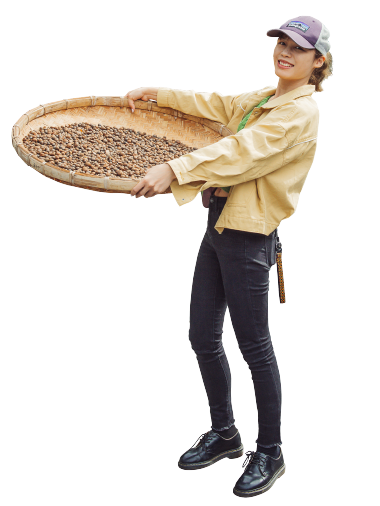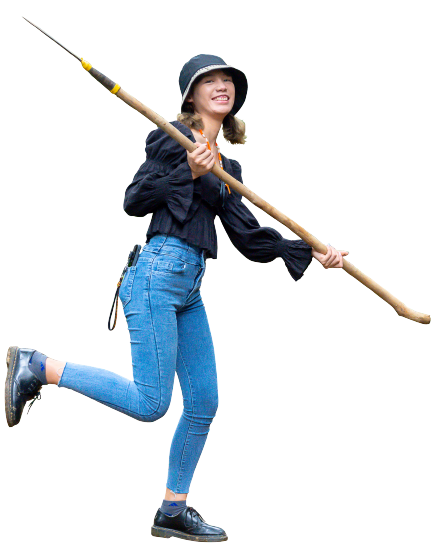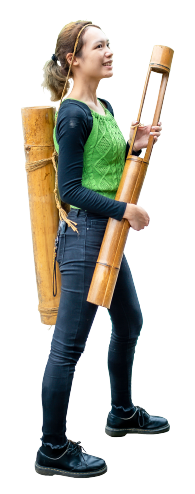Ispalakan Umav
Child of a Bunun and Atayal
Admininistrator of Facebook Fans Page “mapasnava Bunun saikin”
Podcaster at “What’s up Umav!”


My name is Umav, full name Ispalakan Umav. I inherited my grandmother’s name and have been using my indigenous name on my official ID for over a decade. I am the daughter of a Bunun father and an Atayal mother. My parents come from different indigenous groups and their homes are far apart. Lived in many places growing up, moving a lot. In addition to indigenous townships, I have also spent half my life in urban areas. I see myself as both from the city and the indigenous community, and sometimes, perhaps I am neither. It all depends on how I am remembered or identified by those people.
I can write about my past experiences visiting Alishan, or how I have been amazed and moved by the Tsou culture, but instead, I would like to share a little of my background with our readers. I have Tsou friends whom I deeply admire and respect. What they have taught and shown me is to share such beauty on even mundane days, and I hope that one day I will also shine just like them with everything that I have learned.
So thrilled to have been invited by Indigenous Insight to visit Niahosa Community in Alishan. Many would think that there is a mountain separating the Bunun and Tsou people, but in fact, the indigenous community which I have lived in the longest so far in my life was a place shared by both the Bunun and Tsou people. It was Mahavun Community in Xinyi Township, Nantou, where the Bunun call it Mahavun, while the Tsou call it luhtu. 
 The Tsou people I have known usually share deep ties with the Bunun, for example, via interracial marriages or as classmates who have grown up together. To the outsider, the Tsou may be known for their attractiveness (pointy nose, big dreamy eyes, and long eyelashes), or the rigorous traditional rituals and cultural structure, but the most substantial connections I have shared with the Tsou were next-door neighbors, friends I went to church with, teammates, grandmas at the crossroads, and kids out on the playground; the non-significant everyday-life details. Sometimes, their relatives from Alishan would visit them at Mahavun, and I would sit quietly next to them while they shared which family from Mahavun and which indigenous community from Alishan were actually from the same family. Having lived in Mahavun for a decade, I got used to telling people that “I’m from Mahavun”. I identify with my life living amongst the Tsou and the Bunun, and that I’m a child of a Bunun and an Atayal. I lived with such an identity for one-third of my life and slowly grew to learn the culture and social community of the Tsou people.
The Tsou people I have known usually share deep ties with the Bunun, for example, via interracial marriages or as classmates who have grown up together. To the outsider, the Tsou may be known for their attractiveness (pointy nose, big dreamy eyes, and long eyelashes), or the rigorous traditional rituals and cultural structure, but the most substantial connections I have shared with the Tsou were next-door neighbors, friends I went to church with, teammates, grandmas at the crossroads, and kids out on the playground; the non-significant everyday-life details. Sometimes, their relatives from Alishan would visit them at Mahavun, and I would sit quietly next to them while they shared which family from Mahavun and which indigenous community from Alishan were actually from the same family. Having lived in Mahavun for a decade, I got used to telling people that “I’m from Mahavun”. I identify with my life living amongst the Tsou and the Bunun, and that I’m a child of a Bunun and an Atayal. I lived with such an identity for one-third of my life and slowly grew to learn the culture and social community of the Tsou people.
Although I no longer live in Mahavun, a beautiful part of my life was spent with my Tsou friends. There are bound to be differences among people in different indigenous communities and different areas. I will try to learn as much as possible, and understand as much as possible, and hope I will not offend. Looking forward to beautiful exchanges.
Written by Umav, the day before going into the mountain




